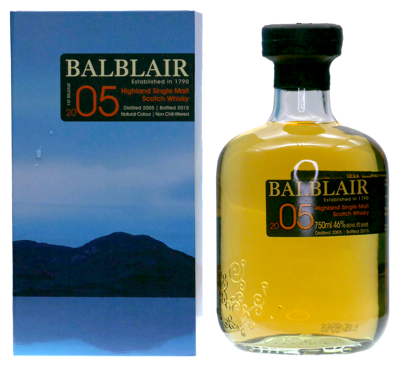|
|
3rd Party Tasting Notes
This first release of Vintage 2005 is light, sparking gold in appearance.
The nose is full bodied with the classic aromas of fresh green apples, ground spices and honey. The American oak, ex-bourbon barrels used in maturation impart notes of oaky vanilla, leather and oranges with a hint of fragrant cut flowers and smoke.
On the palate Balblair's signature style of citrus orchar is followed by intense sweetness of toffee and vanilla rounded off by a deliciously spicy, long finish. The superb dram is bright and full of character, a ray of sunshine in a bottle.
The nose is full bodied with the classic aromas of fresh green apples, ground spices and honey. The American oak, ex-bourbon barrels used in maturation impart notes of oaky vanilla, leather and oranges with a hint of fragrant cut flowers and smoke.
On the palate Balblair's signature style of citrus orchar is followed by intense sweetness of toffee and vanilla rounded off by a deliciously spicy, long finish. The superb dram is bright and full of character, a ray of sunshine in a bottle.
From the Bottle
The Distillery: Balblair
| Established: 1790 |
| Silent since: False |
| Address: Edderton, Tain, Ross-shire, IV19 1LB, Scotland, UK |
| → website |
2001 - Inver House (the parent company that bought Balblair in 1996) was bought by Pacific Spirits from Thailand.
Balblair was founded in 1790 by one John Ross, but the oldest buildings at today"s distillery date from the 1870"s. Ownership of Balblair was in the hands of Andrew Ross & Son by the end of the 19th century and had been transfer- red to Alex Cowan & Co in 1896. The Balblair distillery was closed during World War I in 1915 and it wasn"t revived again until 1947, after the end of the second World War.
Comparing the two lists of acquisitions, I"d have to say that the Japanese seem to have chosen more carefully. Most of these "Thailand" distilleries haven"t produced a lot of malts that made a lasting impression on me... Well, at least no so far - but I guess improvements in production policy won"t be felt on our shelvesfor a few years.

The Japanese have a broader "portfolio" as well, including Lowland and Islay malts. The Inver House distilleries are located in Speyside (Balmenach, Knockdhu and Speyburn) and in the Northern Highlands (Balblair and Old Pulteney). I don"t know if the more nortnern location of Old Pulteney has something to do with it, but most of the expressions I tried had a little more power and character than bottlings from its relatively southern cousin, Balblair.
During the 1990"s, most of the Asian investments came from Japan. The three major Japanese investors in Scotland are Suntory (owning Auchentoshan, Bowmore and Glen Garioch through Morrision Bowmore), Nikka (owning Ben Nevis) and Takara Shuzo Okura (owning Tomatin). That means that by the turn of the millennium, 5 out of the circa 85 remaining active distilleries in Scotland were under Japanese control. Banzai!
By buying Inver House in 2001, Thailand matched the Japanese invest- ments in a single blow, doubling the East Asian involvement in the Scotch whisky industry. Through Inver House, there are now five more distilleries that are being kept alive with funding from Asia; Balblair, Balmenach, Knockdhu, Old Pulteney and Speyburn.
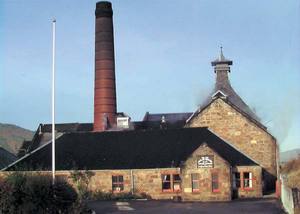
In 1949 Balblair was taken over by R. Cumming & Sons, a subsidiary of Hiram Walker-Gooderham & Worts Ltd from Canada. They expanded the number of stills at Balblair from two to three. Only two of the stills are used regularly.
Inver House bought Balblair distillery in 1996. Inver House Distillers Ltd. were themselves bought in 2001 by "Pacific Spirits", part of the so-called "Great Oriole Group". This group is in turn controlled by a businessman from Thailand; Charoen Sirivadhanabhakdi.
A generous glass of Balblair is nothing to be scoffed at either, mind you... None of the expressions I"ve tried so far made my heart really flutter, but then again I haven"t tried a bad Balblair either so far - most scored around average in my book. I should be able to tell more about Balblair after some further research...
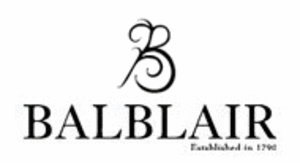
In the new Millenium
2007 - The entire range of official bottlings is refreshed. Beforehand, the range of Balblair consisted of the "Elements" expression, as well as a range of releases, mostly with an age statement. These expressions have now been replaced by vintage editions in a higher price range.
Trivia:
- Balblair is one of the oldest Scottish distilleries still in operation. Just a handful of other distilleries in Scotland were founded before 1790, including Bowmore and Strathisla. Well, at least that"s what they claim - the records from these days are often quite vague...
- Although Balblair "officially" has three stills, the oldest and smallest one isn"t used anymore.
from Malt Madness
The Owner: Inver House Distillers
| Established: 1964 |
| Silent since: False |
| Address: Towers Road, Airdrie, ML6 8P, Scotland, UK |
| → website |
Being part of a larger group ensures the company"s continued success in an increasingly competitive market place.
Inver House is also committed to the training and development of its employees and in 1999 received the coveted Investors in People accreditation.
In October 2001, Inver House entered a new chapter when it was purchased by Pacific Spirit (U.K.) Ltd, now International Beverage Holdings Limited (InterBev) - the international arm of Asia"s leading drinks business, the Thai Beverage Public Company Limited (ThaiBev) with an outstanding portfolio of beverage alcohol brands across spirits, wine and beer categories.
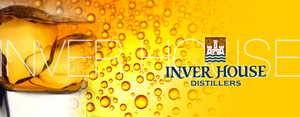
The substantial warehousing, blending and office facilities all remained, and do so to this day, as do the state of the art Gin, Vodka and Cream Production Facilities.
However, following the takeover by the management team in 1988, and the revival of the Scotch Whisky industry, Inver House Distillers purchased 5 highly regarded malt distilleries over a period of 9 years. Since then Inver House has gone from strength to strength in its commitment to a worldwide market. This continued commitment was recognised in 1992 with the granting of the Queen"s Award for Export Achievement.
Inver House Distillers was established in 1964 as a subsidiary of the American company, Publicker Industries. In the 1970"s the Scotch Whisky industry faced competition from other spirit categoreis and coupled with the death of its American Chairman, Publicker Industries did not focus its business interests in its Scottish subsidiaries. As a result of this, the malt and grain distilleries at the Scottish site in Airdrie became surplus to requirements and were closed in 1985 and 1986.
Trivia:
- IHD currently owns 5 distilleries: Pulteney, Balblair, Knockdhu (including anCnoc Single Malts), Speyburn and Balmenach.
- IHD also produces blended malt scotch whisky Blairmhor and the blends Hankey Bannister, MacArthur"s, Catto"s and Green Plaid.
- IHD"s portfolio also includes Vodkas, Gins and Liqueurs.
from Inver House Distillers
The Owner: International Beverage
| Established: 2005 |
| Silent since: False |
| Address: 14 Vibhavadi-Rangsit Road, Chom phon, Chatu chak, Bangkok 10900 Thailand |
| → website |
International Beverage"s aim is to become the leading Asian international drinks company.
International Beverage now has responsibility for the growth internationally of a strong portfolio of beverage alcohol brands across spirits, beer and other categories. These global operations are managed out of our four regional headquarters located in United Kingdom, Singapore, China and North America.
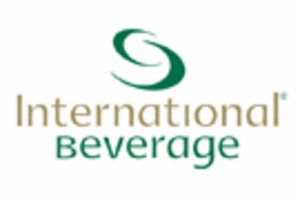
We export our brands to over 80 countries outside Thailand and our operations include distilleries in Scotland, China and across South East Asia.
International Beverage Holdings Limited (International Beverage) has been formed to be the international arm of Thai Beverage Public Company Limited (ThaiBev) and was established in 2005 to facilitate the continued expansion of the drinks business outside of Thailand.
Trivia:
- IB"s brand portfolio includes Chang beer, Mekhong Thai whisky, Sang Som liquor, Old Pulteney, Balblair, anCnoc and Speyburn single malts, Hankey Bannister, MacArthur"s, Catto"s and Drummer blended scotch whiskies, Caorunn gin, Old Pulteney and Heather Cream scotch liqueurs."
from International Beverage
The Owner: Thai Beverage Public Company
| Established: 2003 |
| Silent since: False |
| Address: 14 SangSom Building,Vibhavadee Rangsit Road, Chomphon,Chatuchak, Bangkok 10900 Thailand |
| → website |
White spirits are distilled liquors made from molasses without any mixture or color, and produced in four strengths of varying degrees of alcohol: 28, 30, 35 and 40% alcohol per volume. The company"s largest-selling white spirits are branded Ruang Khao or rice stalk. The labels are color-coded to reflect the alcoholic strength but do not have the brand name printed on them. Other brands in this category are Niyomthai and White Tiger.
ThaiBev produces brown and white spirits. Thai liquor is technically rum. Rum is derived from distilling cane juice, sugar or molasses until the product is with 60-95 degree alcohol content. The content is mixed with purified water to produce a satisfactory level of alcohol content before being transferred to age in charred oak barrels for at least one year. Before being bottled the liquor may be further mixed to adjust for desired color, aroma, and taste, but it has to have at least 40 degree alcohol content.
ThaiBev"s most famous, but not highest selling, liquor brand, Mekhong, originated in 1941 at the Bangyikhan Distillery west of Bangkok. Originally a state-owned distillery, it dates back over 200 years to the beginning of the current Chakri Dynasty. The launch of Mekhong was aimed at producing high-quality Thai liquor to stem the increase in the import of foreign liquor and to eventually replace imported brands. Sang Som however, has been the country"s most popular liquor brand for over 29 years, until 2006 holding almost 50% of the entire brown spirits market in Thailand. The company also produces Mungkorn Thong and Hong Thong and brands based on malt whisky, like Crown 99 and Blue, as well as Scottish whisky brands such as Hankey Banister and Pinwinnie Royal Scotch Whisky.
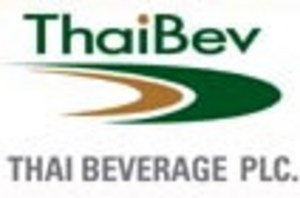
Thai Beverage (ThaiBev) is one of the largest beverage alcohol companies in South East Asia. Listed on the Singapore Stock Exchange, Thai Beverage Plc has a market capitalisation in excess of US$4bn.
Thai Beverage Public Company Limited owns and distributes a number of significant brands including Chang beer and Mekhong and Sang Som rum. Chang Beer, which first started production in March 1995 at the brewery in the district of Bang Ban, Ayutthaya Province, is the top-selling brand in Thailand. It managed to win 60% of market share in Thailand after a hard market fight with the previously biggest brand Singha. In 2006, the company"s market share was 49% of the beer market, according to research company Canadean.
"ThaiBev" was incorporated in Thailand in October 2003 in order to consolidate Thailand"s leading beer , spirits and non-alcohol businesses owned by the principal shareholders and their business associates under a single holding company.
from Wikipedia, ThaiBev.com
